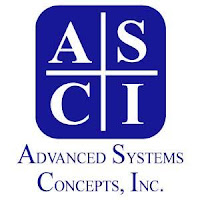– Ben Rosenberg, President and founder of Advanced Systems Concepts (www.advsyscon.com), says:
As IT organizations continue to balance rising resource demands versus constraints on data center space and budgets, they’re being forced to do more with less. To cope, IT departments are aiming to squeeze efficiencies out of existing infrastructure by betting heavily on consolidation, virtualization and new hardware. While upgrading and virtualizing is all the rage, IT departments are still supporting legacy applications that drive value and store critical data, leading to heterogeneous IT environments.
This consolidation means that the automation of manual processes is becoming a critical focus for IT organizations as they look to provide users with more capabilities, for example, around the provisioning of systems. As a result, job scheduling and workload automation solutions are moving to the center of integrating both IT and business application processes with the integration of newer virtualized systems, all the while conserving resources, reducing costs and streamlining IT operations.
The IT Transformation
Virtualization is transforming the way business runs IT. It allows IT departments to promote flexible utilization of IT resources, reduce operating costs and allow for the higher availability of applications and systems. However, the virtualization of data centers is presenting a unique set of challenges around the transition and management of the virtual infrastructure while still leveraging legacy applications.
But virtualizing your data center isn’t enough. With virtualization comes virtual machine sprawl, in addition to workload migrations and the need to integrate legacy infrastructure with newer environments to create agile and cost effective data centers. It’s at this intersection of processes and technologies that job scheduling and workload automation solutions can assist in conquering the complexity inherent in today’s IT environments. In tomorrow’s data center, virtualization, automation and infrastructure integration represent an opportunity to reduce costs, streamline IT operations and offload some of the grunt work typically tackled by IT staffers.
The Move To A Virtualized, and Now Automated, Environment
The evolution of distributed computing environments signaled the need to coordinate different forms of job scheduling into a centralized and unique solution. This resulted in workload automation solutions, which has allowed for different forms of automation to converge toward an integrated and centralized solution. Cloud computing and virtualization bring about yet another form of automation that, in turn, need to adopt a similar approach.
In many ways, on-demand provisioning and virtual infrastructure management has presented data centers with a myriad of challenges around the management and integration of virtual environments. Unless infrastructure-wide management is an integrated part of the private cloud delivery solution, the promise of lower costs with fewer manual interventions will remain elusive. IT automation solutions are key if companies are to optimize hands-free provisioning and administrating of virtual environments. The result is an IT department that is more responsive to business initiatives and a more productive staff.
As a result, cloud computing and virtualization are accelerating the demand for automation. Running jobs on diverse machines requires resources. This resource allocation, based on finite physical capacity, is a key point of workload automation solutions. Mission-critical workloads that span both newer, virtualized systems and older legacy applications aren’t processed in time for lack of capacity or performance limitations. This can have dire business consequences. The flexibility of virtual and cloud environments, whether confined within a physical server or developed as a private or public cloud, presents complexity challenges in which simple runbook automation is no longer the solution. Bringing virtualization and the cloud into the automation equation is the most effective way to automatically allocate resources to workload processing where and when it’s needed.
In addition, rather than provisioning server resources for peak demand – and paying the price for underutilization during low workload demands – the era of cloud computing provides the ability to match workload execution with resource capacity in a “pay as you go” model. Workload automation is required to ensure that capacity matches closely with workload demand, thus eliminating the costs of idle resources between spikes in workloads.
Workload automation solutions are becoming a centerpiece for integrating and orchestrating processes across these heterogeneous environments, and therefore perfectly situated to assist companies in the transition from older, legacy technologies to virtualized environments. They serve as the automation engine to integrate applications and IT functions and allow IT operations staff to define and run sets of business processes between widely varied applications and technologies.
In addition to integrating legacy systems with newer technologies, workload automation solutions provide behavioral insight such as performance, availability and capacity factors that govern the execution of processes by analyzing service behaviors and then triggering the appropriate actions. Market leaders also provide integration with IT management solutions, thus allowing a user to leverage their enterprise monitoring solution to monitor the performance of mission-critical workflows and processes.
Workload automation vendors have recognized these developments and are now taking things a step further by marrying both predictive and reactive forms of resource management, provisioning and scheduling to transform the way virtual and cloud environments are managed and governed. This will allow enterprises to leverage historical processing information to proactively configure public and private cloud resources in advance of workload execution. This will help ensure that workloads are executed and completed on time to meet SLAs and business priorities.
Today’s data centers and IT environments are at a tipping point, as the move towards virtualized and cloud computing environments will parallel the growth and importance that automation solutions will play in today’s distributed IT world. In particular, the ability to integrate existing infrastructure with newer technologies, all the while proactively provisioning virtualized and cloud systems on the fly workload automation solutions will provide IT departments with the opportunity to reduce costs, streamline IT operations and increase productivity.
About the Author:



